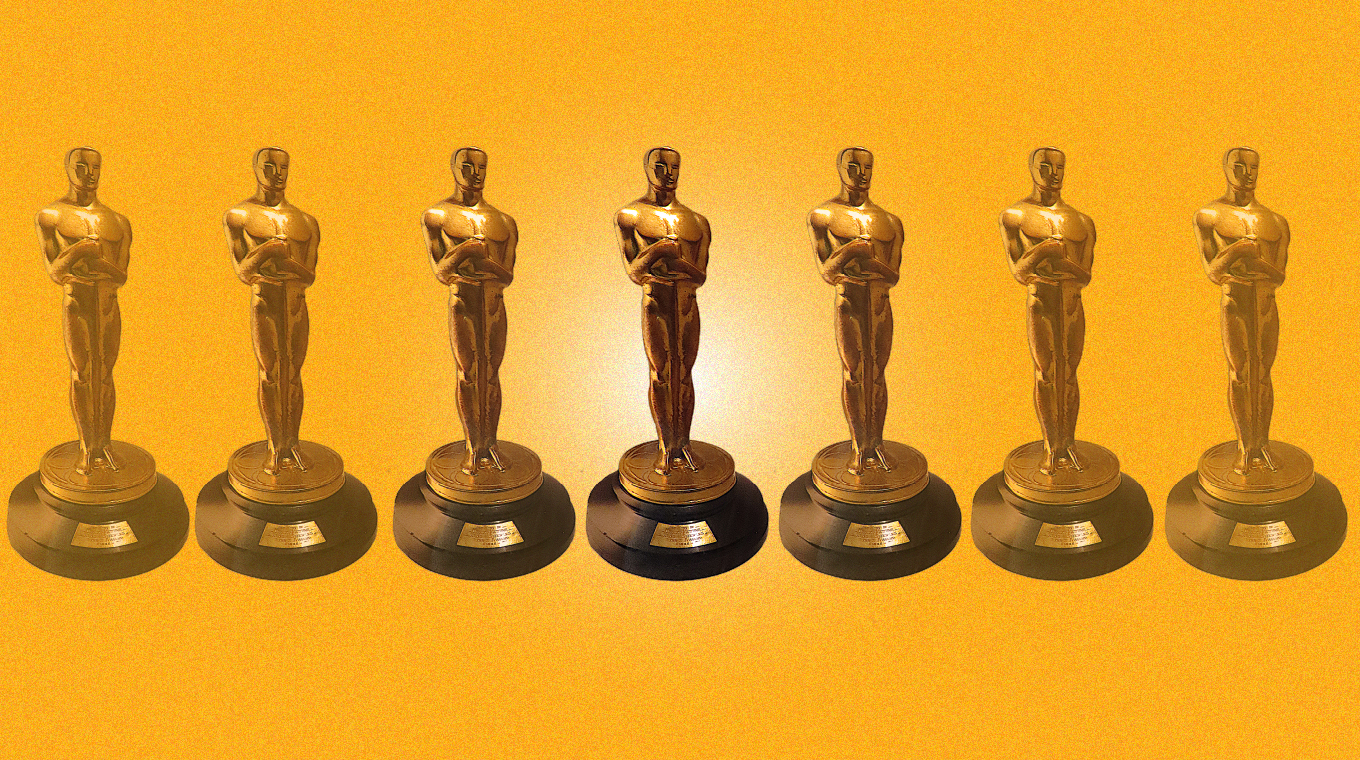There is no single path to the Academy Awards, and certainly no single path toward the night’s ultimate honor: Best Motion Picture of the Year.
For nearly a century, arthouse auteurs, indie darlings and breakout blockbusters have fought their way to the top of annual best-of lists, swept precursor awards and navigated the complicated world of Hollywood politics to claim their spot in one of cinema’s most exclusive clubs.
This year, the 10 best picture nominees have yet to produce a clear frontrunner. The Hollywood Reporter and Variety have their chips on Bob Dylan biopic A Complete Unknown, IndieWire leans to Broadway adaptation Wicked, while the Los Angeles Times is split between papal thriller Conclave and The Brutalist. Entertainment Weekly has also hedged its bets on Brady Corbet’s three-and-a-half hour modern American epic.
Netflix’s Spanish-language Emilia Pérez, which led the pack with 13 nominations and a Best Motion Picture – Musical or Comedy Golden Globes win, slipped from its perceived frontrunner status after controversial tweets from its lead actress, Karla Sofia Gascón, resurfaced.
As the best picture race heats up, Capital News Service analyzed which film best fits the profile of a best picture winner, based on metrics like budget, box office performance, runtime, numbers of nominations, distribution company, language and country of origin. Previous awards, perceived momentum and backdoor lobbying will be ditched in this analysis; CNS is only interested in comparing each film’s profile to those of the prior best picture winners.
This year’s nominees will be compared to the last 15 winners, or every best picture since the Academy of Motion Picture Arts and Science increased its list of maximum annual nominees from five to 10 in 2010.
Over 15 years, no one distribution company has fully dominated the best picture landscape, although Searchlight Pictures has come the closest, distributing over a quarter of winners. Unsurprisingly, American-produced, English-language films dominate, making up 80% of winners since 2010. Out of the three non-English language films to have won best picture, two came in the last 15 years. The first was American silent film Wings, the winner from the first-ever Academy Awards in 1929.
Unlike last year, when A24 had both The Zone of Interest and Past Lives competing for best picture, no distributor scored multiple nominations in 2025. Searchlight Pictures is in the mix with A Complete Unknown, while arthouse distributor Mubi entered the race for the first time with their body horror satire, The Substance.
Seven of this year’s nominees are American-produced and English-language, like the typical best picture winner. Conclave resembles 2011’s winner, The King’s Speech, also a British production. Brazil broke into the best picture category for the first time with political-drama I’m Still Here, likely hoping to ride a wave similar to Parasite’s groundbreaking 2020 win.
This year’s nominees are notably longer on average than prior winners. 2025’s lineup clocks in around 2 and a half hours on average, compared to an average runtime of around 2 hours since 2010. Some of this is due to The Brutalist’s gargantuan 215 minute runtime, but, every nominee, save Conclave, exceeds the criteria’s historical average. The Brutalist would be the fourth-longest film in Oscars history, the longest since Ben-Hur in 1960.
Conclave, along with A Complete Unknown, scored 8 total nominations this year, closest to the 8.5 nominations for the average best picture winner. Although Emilia Pérez leads this year in nominations, it doesn’t guarantee the film a golden statue at the end of the night. Only 6 of the last 15 best picture winners were the most nominated films of their years, including recent winners Everything Everywhere All at Once and Oppenheimer.
No nominee this year matches up exactly with the average budgets and worldwide grosses established by prior winners. Conclave, A Complete Unknown, and The Substance come the closest, all moderately budgeted with box office hauls nearing $100 million.
In recent years, however, winners have bucked traditional box office trends. CODA, from Apple Original Films, became the first streaming exclusive to win best picture, and with it, the first winner to never have a wide theatrical release in North America. Two years later, Oppenheimer became the first blockbuster to win in 20 years after grossing nearly $1 billion.
Compiling all of these criteria, one film emerges as a likely frontrunner based on its similarity to past winners for Hollywood’s highest honor: A Complete Unknown.
It has Searchlight Pictures powering its Oscars campaign, which successfully landed it right in the sweet spot of eight nominations. It’s an American production in the English language, with a budget and gross neatly within the 15-year averages. It only goes astray slightly in its runtime, though it’s only about 16 minutes from the historical average.
Conclave is a close second, with an identical amount of nominations, similar box office performance and an ideal runtime. However, Conclave’s distributor, Focus Features, holds the unfortunate record of 17 best picture nominations without a win, so history might not be on the side of Ralph Fiennes and company.
Oscar predictions are an inexact science, no matter the methodology. But, compared to previous winners, A Complete Unknown best fits the profile of a best picture victor. Plus, it doesn’t hurt that the biopic received more nominations than expected, a sign that Academy voters are looking favorably upon Timothée Chalamet’s turn as the legendary singer-songwriter.

